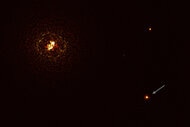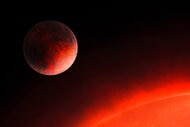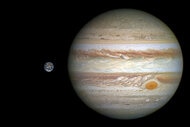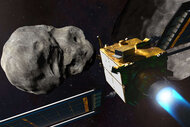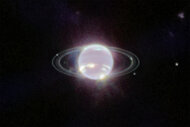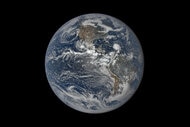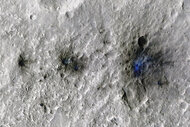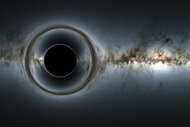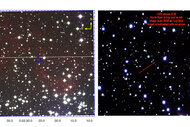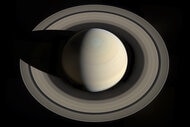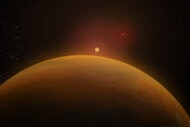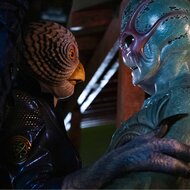Create a free profile to get unlimited access to exclusive videos, sweepstakes, and more!
Perseid Meteor Shower Peaks Aug. 11 and 12 with a Possible Strong Outburst!
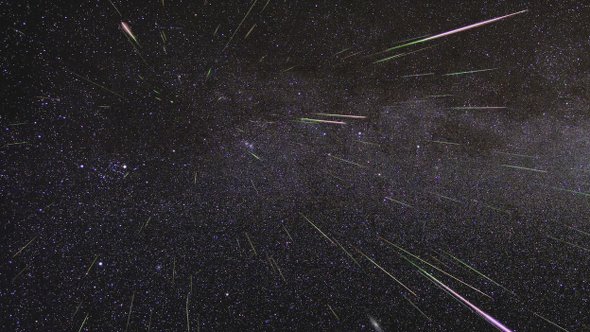
The annual Perseid meteor shower peaks this year on Aug. 11 and 12, with the best viewing after local midnight. The shower is one of the very best of the year, with 60 or more shooting stars visible every hour.
I have a viewing guide below, but first there’s some unusual news: The shower may have a rare outburst, a big uptick in activity, this year!
The Perseids are debris from the comet Swift-Tuttle, which orbits the Sun every 133 years. When it gets close to the Sun, the heat from our star turns the ices in the comet into gas, forming the long tail. Small bits of rocky debris also slough off and trail behind the comet. When the Earth plows into these, they burn up in our atmosphere to form the shower.
However, they’re not alone in space. Jupiter’s gravity tugs on the stream of particles, causing their orbits to shift. Sophisticated computer simulations indicate that this year, the Earth should be plowing through a denser than usual part of the stream, creating as many as 200 shooting stars per hour!
This outburst should occur on the night of Aug. 11 and 12. It’s not clear if it will happen, or when—these things are pretty difficult to predict—so I advise you go out shortly before midnight and stay out as long as you can. If you miss it, don’t fret: The shower will still be nice the next night, too. As I describe below, the later at night you can stay out the better.
So, ready for the viewing guide? Here you go. I’ve adapted the previous year’s guide to be appropriate for 2016. Watching a meteor shower is easy and fun, and I highly recommend it. Even better, the roughly half-full Moon sets around midnight, so it won't be around to wash out the meteors! So get out and take a look.
Oh, one more thing: If you have cloudy skies, don't fret: NASA will live-stream the shower! So you can always watch on your computer.
Perseids 2016 Viewing Guide
For the tl;dr crowd: The best time to go out is Thursday night Aug. 11/Friday morning Aug. 12 after your local midnight. Find a place with wide-open skies, lie back, and look up. You don’t need a telescope or anything like that. The meteors should zip across the sky about once per minute or so on average, appearing to come from near the constellations of Cassiopeia and Perseus in the northeast.
Meteor showers occur when, as the Earth orbits the Sun, it plows through the debris left by a comet (or, in one case, a weird asteroid) that is also orbiting the Sun. Comets are basically dust and gravel held together by water ice, and as the Sun warms the comet, the ice sublimates (turns directly to gas) and the rocky bits are sloughed off. They orbit the Sun in more or less the same path as the comet, and when the Earth rams through them, they enter our atmosphere at high speed, heat up, and glow.
And we get a meteor shower.
Due to perspective (the same effect that makes raindrops always seem to be coming from ahead of you when you drive a car through a rain shower) the meteors appear to come from a point in the sky in the constellation of Perseus, near the W-shape of Cassiopeia. They radiate away from there, so that point in the sky is called the radiant, and the shower gets its name from the constellation.
By the way, I did a whole episode of Crash Course Astronomy on meteors. It’s not specific to the Perseids, but it’s chock full o’ fun science.
Now, on to the FAQ!
When is the best time to watch?
Technically, the meteor shower starts around July 17 and lasts until late August. Realistically, though, it peaks over the week around Aug. 11–13. This year, the best time to watch is Thursday night/Friday morning after local midnight (that’s when your part of the Earth is facing into the oncoming meteoroids and you see more). However, a night before or after will be fine, too. The later you wait in the evening the better, but even a couple of hours after dark will be fine.
How many will I see, and how often?
The Perseids average about 60–100 meteors per hour. I usually see a lot fewer than that because my skies aren’t particularly dark. Meteors are random, in that you may see three in a row in a few seconds, then nothing for five more minutes.
A lot of people have the misconception that you’ll see meteors zipping across the sky everywhere like fireworks. It’s not like that; expect to see one per minute or so. Trust me, it’s still wonderful!
Speaking of which, don’t expect to go outside and see tons of meteors right away. Your eyes take a few minutes to adjust to the darkness (it takes about a half hour to get fully adapted) so give it a few after going out. Patience!
And remember, if there's an outburst, you might see many more! It's worth going out to see.
What direction should I face?
Up! Seriously, meteors can appear anywhere in the sky (though they tend to head in a direction away from Perseus), so the more sky you can see the better. Try to get away from buildings and trees. I have a spot in my yard with fewer trees and where my house blocks the light from nearby towns. See if you can find something similar.
Do I need a dark sky?
Being away from city lights helps a lot. Many meteors are fainter and get washed out if the sky is bright from light pollution. However, I grew up in the Washington, D.C., suburbs and usually saw quite a few meteors, so incredibly dark skies aren’t critical. Just nice.
Do I need a telescope or binoculars? A camera?
I think this comes up due to movies and TV shows (and commercials in fact) where they show people out in a field looking through a telescope during a shower. But this is a terrible idea! Meteors zip across the sky from random spots, so you want to see as much sky as possible. A telescope only lets you see a tiny part of the sky at once. Bent over an eyepiece, you’re likely to miss everything. It’s like trying to watch fireworks through a soda straw.
Having said that, if you have binoculars or something else, why not use them every now and again just to see the sky? You’re outside, it’s dark, and the wonders of the heavens await! Just be aware you’re trading off seeing some meteors if you do, but scanning the Milky Way with binoculars for a few minutes is totally worth it.
As for taking pictures, getting good shots of meteors can be a bit tricky. I suggest reading the guides at the American Meteor Society, Sky and Telescope, and PetaPixel. What you get out of the effort depends on what you put in, usually. But even inexpensive digital cameras can do the trick.
Meteors, meteoroids, meteorites? What?
Meteoroids are the solid bits of debris. Meteors are what we call them as they shine brightly, ramming through our air. Usually they burn up, but if they make it to the ground we call them meteorites. So a meteorite is a meteoroid that survives being a meteor.
How fast are the meteors traveling?
A typical Perseid is moving at about 60 kilometers/second (35 miles/sec) when it enters our atmosphere. That’s 200,000 kph (130,000 mph)! That’s incredibly fast; rapid enough to get from the Earth to the Moon in just two hours.
Geez, that’s fast! Are we in any danger from the meteors?
Nope. These are generally not much more substantial than snowflakes or grains of sand. They burn up 90–100 kilometers above the ground, far, far above your head.
Are astronauts in danger from meteors?
Not really. The odds of the space station getting hit are incredibly low, even over the course of many years. But in 2011 astronaut Ron Garan got a photo of a Perseid meteor burning up in the air below him. How cool is that?
Why do they leave a smoke trail?
That’s not really smoke; it’s vaporized meteoroid bits! As the meteoroid screams through the air, it gets hot because it’s violently compressing the air ahead of it—when you squeeze a gas it gets hot, and the meteoroid is squeezing the air hard. Bits of the particle melt and blow off (astronomers call this “ablation”) forming the long trail (technically, we call it a “train”) and can take a few seconds to cool and fade.
One meteor got really bright and I thought I saw a puff of smoke that lasted for a few minutes. What was that?
Pushing through our air at high speeds puts the meteoroid under incredible pressure. It can break apart, and the pieces burn up much more rapidly. This can cause a pulse or multiple pulses of light, basically explosions. The meteoroid can disintegrate, creating a big puff of ionized particles that sometimes last for several minutes (this is called a “persistent train”), which then gets twisted in high-altitude winds. It’s rare, but spectacular. I’ve never seen one.
Why are some meteor trains long and some short?
The length of the train depends on the angle of the meteor toward you. If it’s headed right at you it will appear foreshortened, so it looks really short. If it’s headed tangentially from you, more or less across the sky, it’ll appear longer.
Its like someone throwing a ball right at you to catch versus watching two people play catch from the side. Perspective counts.
Can I listen to the shower?
This may seem like a weird question, but the answer is yes, kinda. They happen so high up that any sound they might make will never reach your ears, so in that sense, no.
But, meteors are so hot they ionize the air around them, stripping the electrons from the atoms and molecules. Ionized air makes an excellent reflector of radio waves, and so a meteor will make a radio “ping” as it zips through the sky. You can listen to this live at the Space Weather Radio site. It’s eerie.
I have more info about this in an earlier post.
Where can I get find out more about meteors?
I’m glad you asked. Here are a bunch of links that’ll keep you occupied until the show starts. Enjoy!

